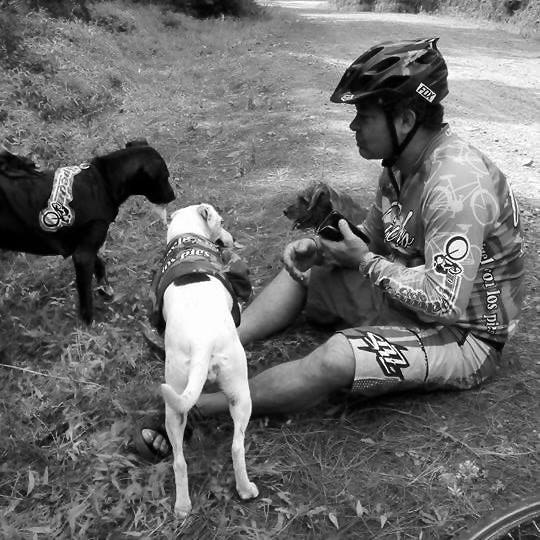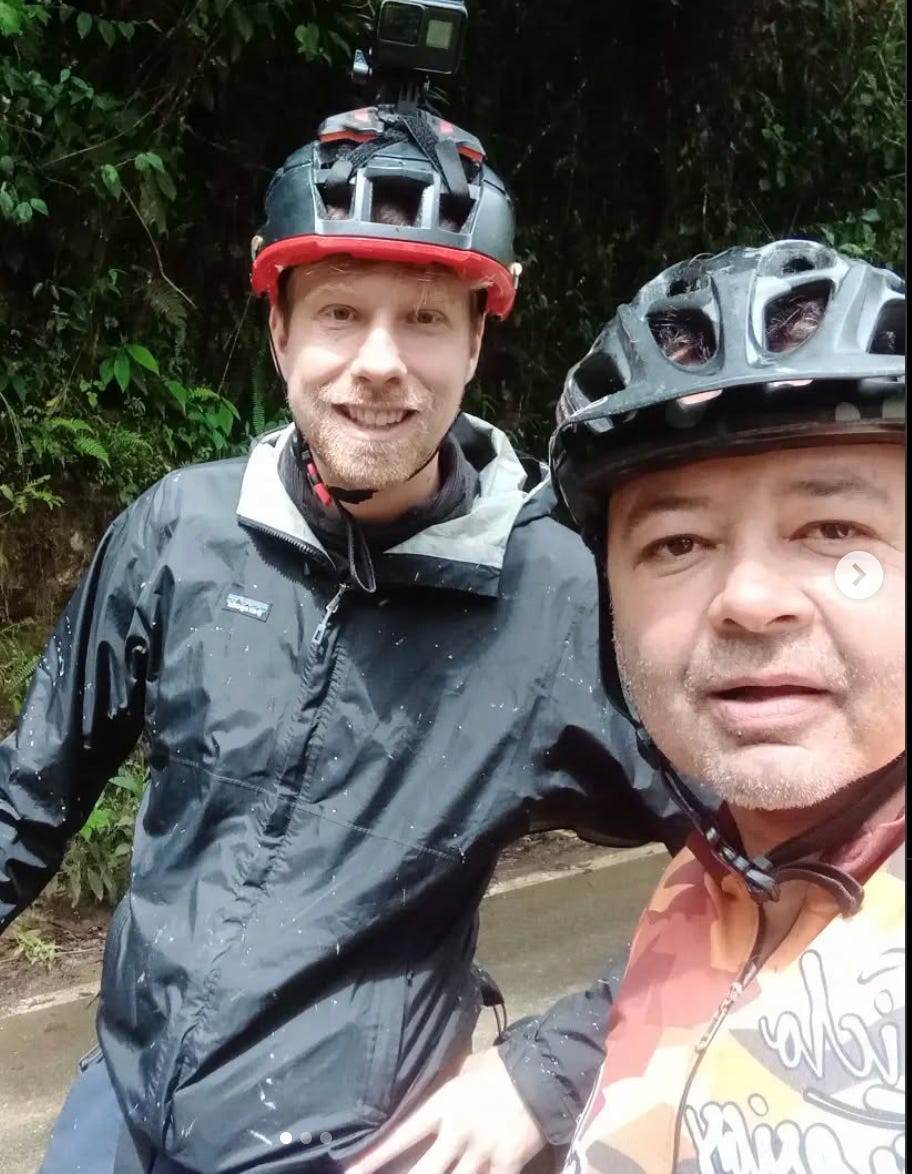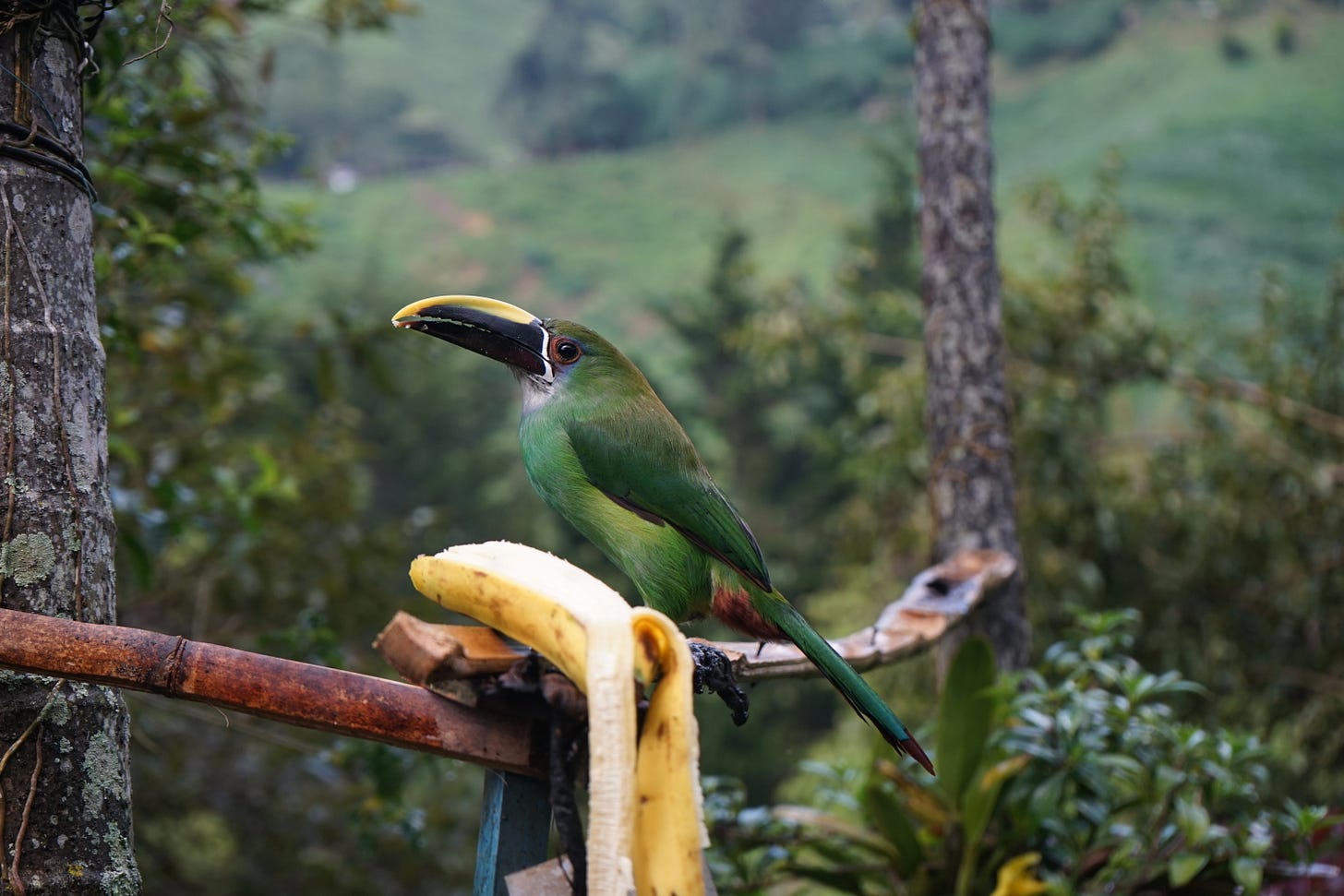South America’s struggle to make space for cyclists
In memory of Manuel Velásquez
Written by Douwe den Held, edited by Anastasia Austin.
Two weeks ago, South America’s cycling scene lost a titan. On September 13, Manuel Velásquez was killed in one of Colombia’s 22 daily traffic accidents.
He was an incredible person and a good friend.
His death hit hard, forcing me to reflect on the challenges, joys, and harsh realities of cycling in South America.
Manuel embodied the grassroots activism I admire in South American cycling culture.
Decades ago, he opened his home on the outskirts of Medellín to bicycle travelers, and over the years, he’s welcomed thousands of people cycling through South America.
The first of them slept on the floor of his garage. Over time, with the help of his guests, he transformed the garage into a real home — with a kitchen, bathroom, living room, and dormitories with bunk beds. Simple, but homey.
In doing so, he joined an informal network of people across South America who run havens for bike travelers, known as Casas de Ciclista. These are places to rest and meet fellow cyclists. For those on tight budgets, they offer a rare chance to sleep under a roof instead of in a tent.
I first arrived at Manuel’s Casa de Ciclista in 2019, after a three-month trip from Peru to Colombia. By that time, both Manuel and his house were already legends.
On first acquaintance, I found Manuel a bit strange. He spoke quickly, almost rambling as he jumped from story to story. But his excitement was infectious. And, by the time I left five days later, I had come to appreciate him, his enthusiasm, and his kindness.
In the five years that followed, I went back often. We became friends.
In South America, class often defines how you cycle. The poor cycle because they have to — pedaling to work because they can’t afford another form of transport. Leisure cycling is largely reserved for the rich, who will load road bikes worth thousands of dollars onto SUVs to escape the city for rides in places without the pollution caused by cars just like theirs
Manuel built his life around changing this dynamic — making the sport accessible to everyone. He organized events, posted road signs urging drivers to be careful, and helped his wife, Marta, run an affordable bike shop.
When I visited, we would talk about routes, bikes, and the never-ending fight to claim space within Colombia’s car-centric infrastructure.
Traffic deaths over the past five years have skyrocketed in Colombia, killing over 8,000 in 2024, in a perfect storm of reckless driving and poor infrastructure.
Car culture dominates in this country. Driving a car is a symbol of status. And, for many young men, masculinity is tangled up in driving – especially reckless driving.
Riding in a taxi, you notice how common it is for drivers to put their own and others’ lives at risk to save a few seconds. This, in a country where appointments rarely start on time. The behavior is rarely questioned or penalized. Even drunk driving is tolerated, as are marathon shifts for truck drivers.
Memorials to the victims of vehicular accidents line the roads of Colombian (and Ecuadorian, and Peruvian) cities. The crosses are dominated by the names and photos of young men, but also bear those of the victims of their recklessness.
That’s partly why, on our ride from Colombia to Argentina, we stick to unpaved roads and paths that see little traffic, which sometimes literally cannot be found on traditional maps (hence, Off Map).
Yet when we get close to major cities, I am forced to reckon with a side of cycling in South America, I like less: the danger, the lack of safe infrastructure, and the classist overtones.
For South America’s clogged cities, building more cycling infrastructure should be a no-brainer. It is cheap to construct, takes little space, and moves people more efficiently and faster than congested highways.
Yet, few cities invest in it – labouring under the misapprehension that, since few people cycle on the dangerous roads now, the demand for bike lanes doesn’t exist.
Cities like Paris, which saw the number of bike users double as it improved its cycling infrastructure in recent years, are a testament to that reality. Once there’s safe infrastructure, people embrace cycling.
Moreover, building cycling lanes improves the commute even for those who don’t cycle, by reducing traffic overall. Moving people on bicycles is far more efficient than moving them in cars (the same is true for public transport and walking). If cities want to move masses, they need to think beyond cars and buses stuck in smoggy traffic.
Medellín proudly boasts Colombia’s only metro system, and, at one time, the city had mayors with ambitious cycling plans. But for years now, they’ve been replaced by conservative politicians whose transport plans begin and end with adding more lanes to the highways. To my endless frustration, the city’s limited cycling paths are now crumbling away.
With little top-down leadership to count on, local activists like Manuel show what South American cities could be like.
Every Wednesday, for example, hundreds to thousands of cyclists get together for the weekly Sicleada, a ride on the main roads of Medellín. They push for better cycling conditions by claiming space, finding safety in numbers as they take over the deadly highway lanes.
But they also make it fun. It’s a motley crew of teenagers on BMX bikes, joint in hand; older folks leisurely cruising; and whole families in sporty leggings and tank tops. Music blasts from boom boxes strapped to racks, and people lean out of their windows to cheer the riders while obnoxious drivers honk angrily as they are forced to slow down by the sheer number of bicycles.
This self-organized protest has now crossed the city over 650 times. Whenever I joined its numbers, I always came home glowing, hopeful that cycling could change the city.
Manuel embodied that hope as, for him, the sport had already been life-changing.
Like so many Colombians, he had been a victim of the conflict at a young age. Later, he fell into addiction and spent time living on the streets. Friends helped him get back on track, he told me, and the structure and community of building his Casa de Ciclista, organizing events, and working for the culture gave him purpose.
And he encouraged me to do the same — to turn my frustrations into something productive.
Last year, I teamed up with my friend Juan José Restrepo to design a series of stickers meant to nudge drivers to behave better.
One sticker warned of the number of traffic deaths in Colombia: 22 a day.
Another showed an image of a flattened child with the text: “Your hurry kills us.”
A third – aimed at the idiots who speed through the narrow streets in any South American city, zooming through stop signs while leaning on the horn – said “Honk less, brake more.”
I gave Manuel a set. The next, and last time I saw him, he had put three of them on the back of his truck.
Two weeks ago, Manuel was driving that truck through the concrete jungle of Medellín when he became one of Colombia’s 22 daily traffic deaths. He left his wife, Marta, and their daughter behind.
Like any traffic accident, it was unexpected, unnecessary, and unfair. I’ll miss him.
But Manuel had always been an optimist.
After Anastasia and I left the Ecuadorian Amazon, we bused through the busy highways leading into Tumbaco, near Quito, to stay at another Casa de Ciclista, an old farmhouse with white walls enclosing a garden.
The place was peaceful, and the owner, Santiago, passionate about cycling culture and eager to teach others.
Manuel is gone, but the work of others like him and those he inspired lives on.











R.I.P. beautiful eulogy and call for cycling safety 🚴
One of my pet peeves is the sudden cheap inclusion of bike infrastructure in car-centric areas in American infrastructure, endangering cyclists’ and pedestrian lives. This often serves as an excuse to boast progressive transportation policies without the effort to build or fix the infrastructure to conform to these new strategies. Examples include placing bike lanes in the middle of high-traffic streets, and sacrificing sidewalk and curb space with no barrier or space protecting cyclists and pedestrians. Sidewalks and bike lanes further show up as a clear afterthought when I see large parked construction vehicles cut them off, leaving no safe detour. No warnings or safety precautions are in place for traffic to follow in such cases, highlighting the town’s priorities..